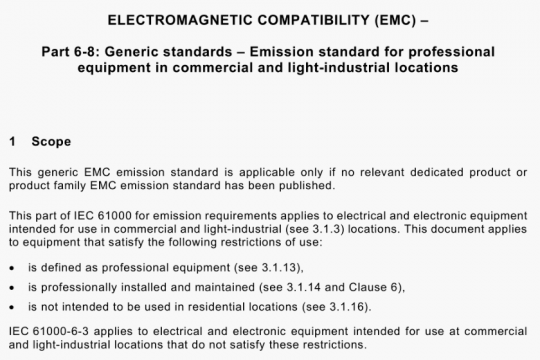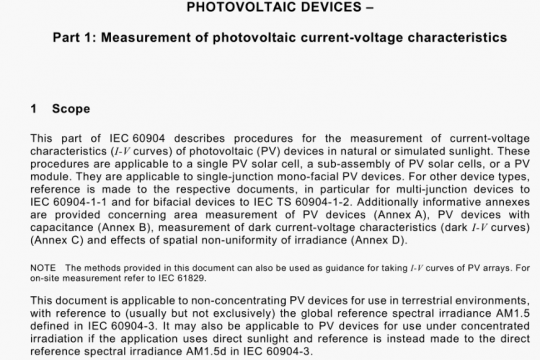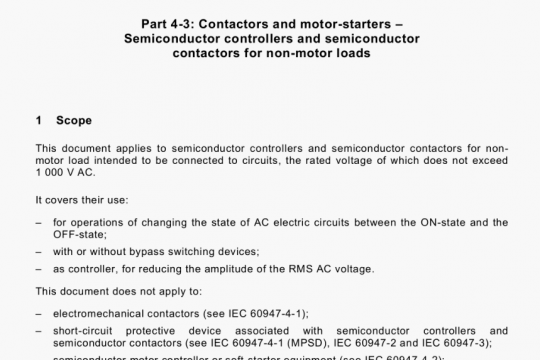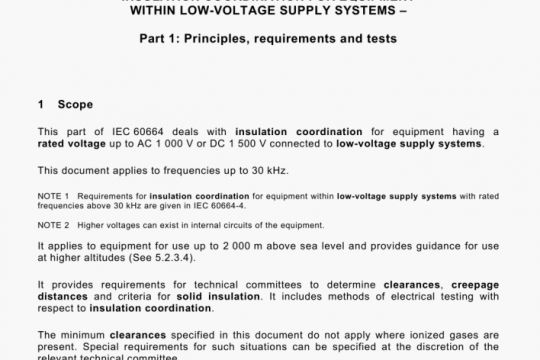IEC 62497-1-2013 pdf free
IEC 62497-1-2013 pdf free.Railway applications – Insulation coordination – Part 1: Basic requirements – Clearances and creepage distances for all electrical and electronic equipment.
4 Basis for insulation coordination
4.1 Basic principles
4.1.1 General
Insulation coordination implies the selection of the electric insulation characteristic of the equipment with regard to its application and in relation to its surroundings.
Insulation coordination can only be achieved it the design of the equipment is based on the stresses to which it is likely to be subjected during its anticipated lifetime.
4.1.2 Insulation coordination with regard to voltage
4.1.2.1 General
Consideration shall be given to:
— the voltages which can appear in the system;
— the voltages generated by the equipment (which could adversely affect other equipment in the system);
— the degree of the expected availability of the equipment;
— the safety of persons and property, so that the probability of undesired incidents due to voltage stresses do not lead to an unacceptable risk of harm;
— the safety of functions for control and protection systems:
— voltages induced in track-side cables;
— the shape of insulating surfaces;
— the orientation and the location of creepage distances:
— if necessary: the altitude that applies.
4.1.2.2 Insulation coordination with regard to permanent a.c. or d.c. voltages Insulation coordination with regard to permanent voltages is based on:
— rated voltage;
— rated insulation voltage;
— working voltage.
Unless otherwise specified in product standards, permanent voltages last more than five minutes.
4.1.2.3 Insulation coordination with regard to transient overvoltage
Insulation coordination with regard to transient overvoltage is based on controlled overvoltage conditions. There are two kinds of control:
— inherent control: the condition within an electrical system wherein the characteristics of the system can be expected to limit the prospective transient overvoltages to a defined level;
— protective control: the condition within an electrical system wherein specific overvoltage attenuating means can be expected to limit the prospective transient overvoltages to a defined level.
EXAMPLE of inherent control: Control ensured by flash-over across insulators or spark gap horns on overhead lines.
EXAMPLE of protective control: Control ensured by the filter of a locomotive on the downstream circuit, provided that no switching overvoltage source is likely to perturb the said circuit.
Insulation coordination uses a preferred series of values of rated impulse voltage: it consists of the values listed in the first column of the Table A.3.
4.1.2.4 Insulation coordination with regard to recurring peak voltage Consideration shall be given to the extent partial discharges can occur in solid insulation or
along surfaces of insulation.
4.1.3 Insulation coordination with regard to environmental conditions
The micro-environmental conditions for the insulation shall be taken into account as classified by the pollution degree.
The micro•environmental conditions depend primarily on the macro-environmental conditions in which the equipment is located and in many cases the environments are identical. However, the micro-environment can be better or worse than the macro-environment where, for example, enclosures, heating. ventilation or dust influence the micro-environment.
NOTE Protection by enclosures provided according to classes specitied in IEC 60529 does not necessarily
improve the micro•environment with regard to pollution.
4.2 Voltages and voltage ratings
4.2.1 General
For determining the working voltage of a floating section, it is considered that a connection is made to earth or to another section, so as to produce the worst case.
It is recommended to avoid floating sections in high voltage systems.
The voltages in this subclause 4.2 are “required voltages” that would be specified for a
particular application. These are different from rated voltages that are stated by a
manufacturer for a product.
Rated voltages are defined for each section of a circuit.IEC 62497-1 pdf download.




